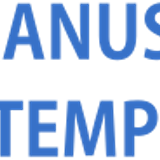ENVIRONMENTAL AND REGULATORY ASPECT STUDY ON THE HARBOR EXTENSION DEVELOPMENT OF PETROLEUM AND PETROCHEMICAL INDUSTRIES
Abstract
Petroleum and petrochemical industries are those industries involving huge amount of products that shall be transported across regional and even international boundaries. Accordingly, many of these industries have their own special harbor or port to accommodate ships that are in and out of the harbor for the purpose of transporting their products. Industries having their own harbor for example are, among others, Pupuk Kalimantan Timur (PKT) in East Kalimantan that produces Ammonia and Urea, and Pertamina Cilacap in Central Java that produces fuels.
As general harbor facilities that need maintenance, this special port has also to be maintained and sometimes extended due to the needs for accommodating bigger ships. Maintenance dredging is one of a harbor maintenance programs for keeping the berth that is always suitable for the ships. When the production of the industries has to be expanded for example due to demand for export purposes, the harbor that supports this activity has also to be extended. Some harbors even need a new area for developing harbor extension, because the old one is not sufficient for accommodating bigger ships.
The harbor extension development will involve several activities, namely (i) dredging of the coastal sediments, (ii) coastal reclamation with the use of some of the dredged materials, (iii) dumping of the dredged materials, and (iv) development of ship-waste reception facilities. Every phase in the harbor extension activity will undoubtedly impact in some extents to the environment surrounding the project. The potential impacts of the project to the environment will depend on the scale (area and volume) of each phase and the duration of the activities. The Ministerial Decree of Environment No. 17/20011 describes the scale limit of the project that has to be preceded by the environmental impact analysis (EIA), or AMDAL study in order to get governmental permit before the project can be implemented. This is certainly valid for a new project that its environmental area has not been studied yet.
Generally, many of the petroleum and petrochemical industries have been established long before the No.17/ 2001 decree being put into effect. The area of the port extension project in which this study was conducted is located in the area that has been studied through Environmental Evaluation Study, SEL (Studi Evaluasi Lingkungan) 2 . Basically, this environmental study covers all over the sphere that has been intended for the industrial activity. There are questions that may arise concerning with the extension project in this area. Should EIA/AMDAL study be conducted for this extension project? Is UKL/UPL (Environmental Management Effort/Environmental Monitoring Effort) study sufficient for this purpose? Regarding that the project scale may exceed the scale limit as described in the No. 17/2001 decree, shall RKL/RPL (Rencana Pengelolaan Lingkungan/Rencana Pemantauan Lingkungan) – Environmental Management Plan/Environmental Monitoring Plan – be revised?
For the purpose of harbor extension, beside the feasibility study which has been covered in the Master Plan Document, it is worthy to describe an environmental review and consideration regarding the activities that might result in an impact to the project surroundings. This environmental review that can be considered as an environmental rapid assessment is beneficial for the project management to have knowledge in making a decision concerning with the selection which the environmental studies (AMDAL, RKL/RPL, or UKL/UPL) that should be conducted prior the implementation of the project.
This paper describes a study that has been conducted concerning the port extension of the petrochemical industry in East Kalimantan, where the SEL for that area has been established. The study emphasizes on the discussions on the environmental and regulatory aspects, in order to have background knowledge leading to the detail environmental management and monitoring study that shall be conducted prior the implementation of the project. The review is divided into two basic issues, namely dredging activity and ship-waste reception facilities. Due to related issues in dredging activities, review concerning dredging, coastal reclamation and dredged material dumping are grouped into one paragraph, while those of shipwaste reception facilities in other paragraph.
Keywords
Full Text:
PDFReferences
Anonymous, 2001, Ministerial Decree (Kep. Men)
of Environment No. 17/2001 for the Types Industries and Activities that should conduct Environmental Impact Assessment.
Anonymous, 1991, SEL (Environmental Evaluation
Study), Final Report, PT Pupuk Kalimantan Timur,
Anonymous, 1985, Dredging Coastal Ports, An
Assessment of the Issue, Marine Board Commission on Engineering and Technical Systems National
Reasearch Council, National.
The International Convention for the Prevention of
Pollution from Ships 1973, and its 1978 Protocol
(MARPOL 73/78).
Anonymous, 1999, Government Regulation (PP) No.
/1999 for the Environmental Impact AssessmentEIA (AMDAL).
Anonymous, 1986, Government Regulation PP 29/
for Environmental Impact Analysis.
Anonymous, 1987, Ministerial Decree of Environment, Kep. 51/MENKLH/6/1987 for Guidelines to
Environmental Impact Evaluation Study.
Anonymous, 1991, RKL/RPL (Environmental Management and Monitoring Plan), Final Report, PT
Pupuk Kalimantan Timur.
Anonymous, 1999, Government Regulation of PP
/1999 for Hazardous Wastes Management.
Anonymous, 1999, Government Regulation of PP.85/
for the Revision of PP 18/1999 of Hazardous
Waste Management.
Anonymous, 1995, Decree of the Head of Environmental Protection Agency No.04/1995 for Land
Disposal of Hazardous Wastes.
Anonymous, 1999, Government Regulation of PP
/1999 for Marine Pollution and/or Damage Control.
Anonymous, 1995, Comprehensive Manual on Port
Reception Facilities, International Maritime Organization, London.
Anonymous, 1995, Ministerial Decree (Kep. Men)
of Environment No. 51/1995 for the Standard Quality
of Liquid Waste for the Industries.
DOI: https://doi.org/10.29017/SCOG.27.2.1050

This work is licensed under a Creative Commons Attribution-NonCommercial-NoDerivatives 4.0 International License.






